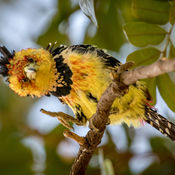

Area Highlights
-
Renowned location for big cats
-
Often refered to as a "leopard haven"
-
Open to the iconic Kruger National Park
-
Private reserve meaning more animals but less people
-
Opportunities for the Big Five + wild dog and cheetah
-
Off road capabilities for Big Five sightings
-
Great all year round

About Sabi Sand
Sabi Sands is often lauded as the most prestigious private reserve in South Africa, perhaps due to the reserve’s longstanding conservation efforts.
The huge 650km2 private reserve shares unfenced borders on the western boundaries of the Kruger National Park allowing animals to roam freely between the reserves. Thanks to the re-purposing of boreholes previously used for the farms into waterholes for wildlife, Sabi Sands can offer a year round water source not affected by seasonal changes. This means you’re never far away from spotting the Big Five and the hundreds of other species that make up the greater Kruger population at any time of the year.
The Sabi Sands is renowned for the Big Five. In fact it was in the Sabi Sands where the hunting term was rekindled as a photo safari term. So successful was this term marketed in the photo safari arena that today it is taken as the apex of wildlife viewing whilst on safari in Africa.
Lions roaming the open plains in their pride and rhinoceros congregating in front of your eyes are a sight to behold, but there’s one animal in particular that shares a unique bond with Sabi Sands; Leopards, the most elusive of the big cats and normally solitary creatures, are much easier to spot in the brushwood than they are in many other leopard reserves. They still favour a big tree, which they use as an observation platform or a resting place, but you can get within two metres of them before they run away. This unique, relaxed reaction is the result of the ban on hunting, which has lasted for over half a century. Several generations of leopards have never heard a gunshot, or had a reason to fear humans, so their passive attitude is a mixture of indifference and comfort.
Kruger National Park
Established in 1898 to protect the wildlife of the South African Lowveld, this national park is unrivalled in the diversity of its life forms and a world leader in advanced environmental management techniques and policies. Kruger is home to an impressive number of species: 336 trees, 49 fish, 34 amphibians, 114 reptiles, 507 birds and 147 mammals.
Truly the flagship of the South African National Parks, this enormous and magnificent park is one of the most popular public-entry game parks in the world.
The Greater Kruger
The Greater Kruger is the collective name given to the private reserves on the western boundary of the Kruger National Park. These include the Klaserie, Umbabat, Timbavati, Balule, Manyeleti, and Sabi Sand reserves. These reserves dropped their fences to become part of one pristine tract of protected wilderness in the name of biodiversity conservation.





























